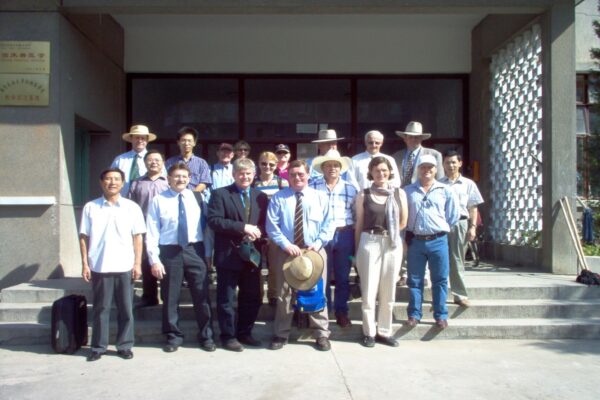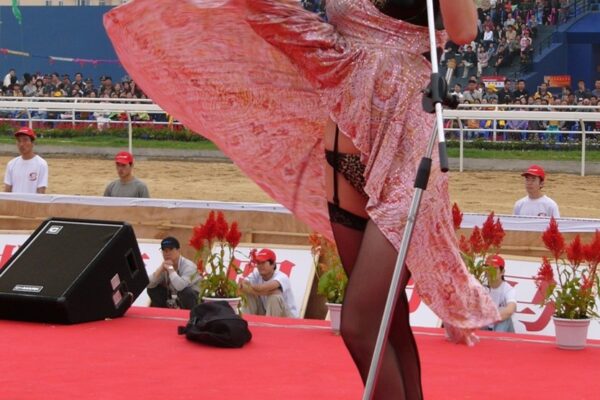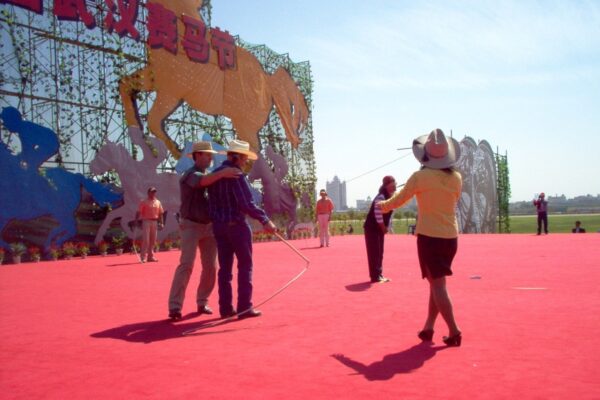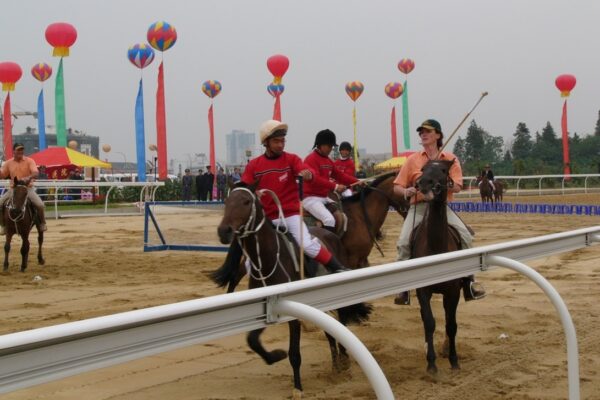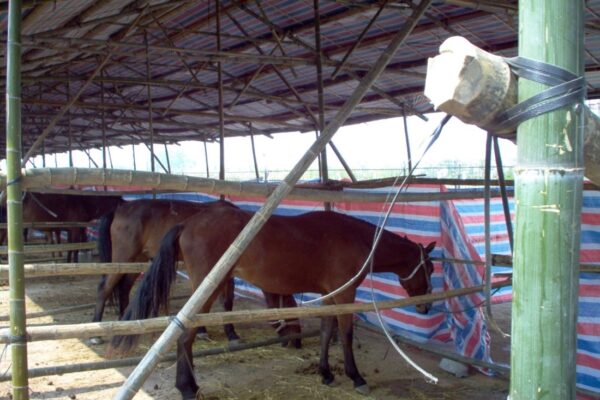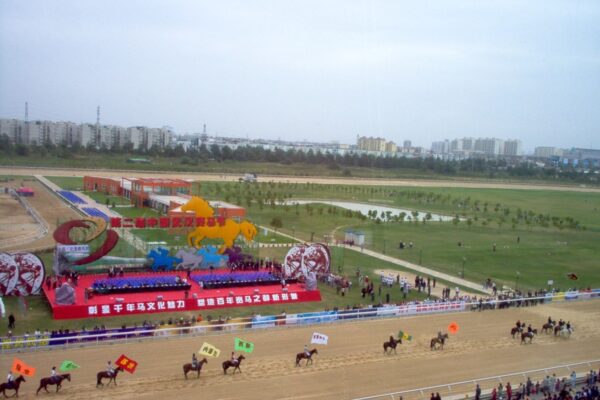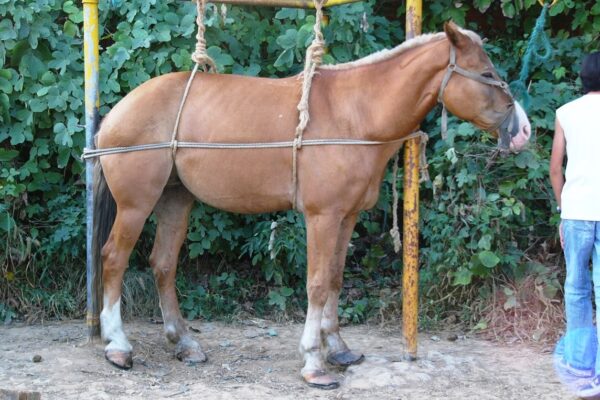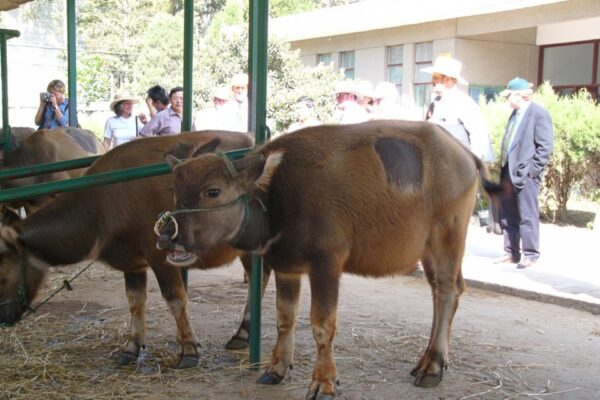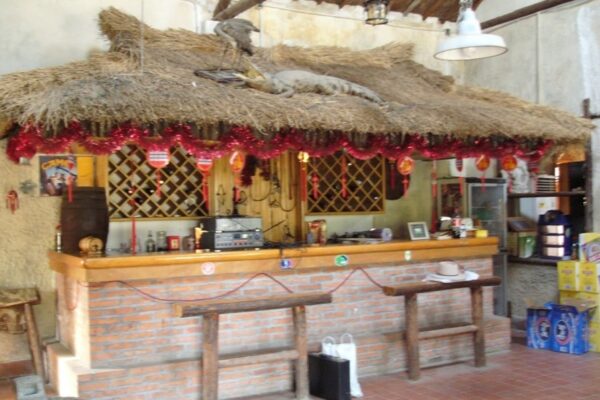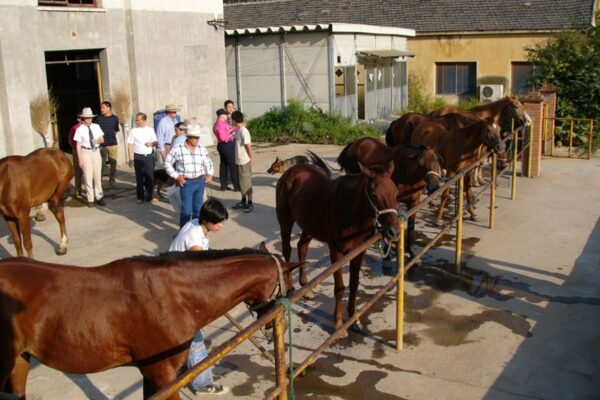Professor W R ‘Twink’ Allen
Featured Image: Acknowledge Sharjah Equine Hospital, Sharjah, U.A.E.
See also: http://srf-reproduction.org/professor-w-r-twink-allen-cbe-scd-frcvs/
See also: https://sconevetdynasty.com.au/breeders-back-artificial-insemination/
Twink’s Memorial Service:
This is the link to the video of Twink’s Memorial Service:
https://vimeo.com/cambridgetv/review/596182776/a06281bd40
Email sent: Sat 21/11/2020 6:59 PM
From: twink allen twinkallen100@gmail.com
To: Bill Howey howeywp@westnet.com.au
Cc: Sandra Wilsher <sandrawilsher@hotmail.co.uk>;
Richard Greenwood greenwoods@btinternet.com
Subject: Your Website.
Dear Bill,
I trust this finds you happy, busy and “in the pink”!
Sandra was “surfing the net” (if that’s the correct term?) yesterday and suddenly started reading out loud all sorts of glowing (but kindly and grossly overstated) bits of blurb and nonsense about me, very generously penned by you under the title of “Scone Vet Dynasty”. I confess I blushed and became redder and redder as she went on but, I have to confess, I hugely enjoyed it all! Extremely kind of you and I can’t imagine what induced you to say all those nice and very decent things about me.
And in response, I must tell you I have greatly enjoyed my all-too-brief but very enjoyable “brushes” with Scone and its horse breeding and equine veterinary inhabitants, right back from when, as a “green- behind-the-ears” veterinary student working on Segenhoe Stud, to joining you and others giving talks and lectures etc to breeders and their hard-working vets. Scone, the “Newmarket of Australia”, has indeed been a “highlight in my veterinary and scientific life”.
I trust you are keeping well, and are clearly still busy. Sandra and I are thoroughly enjoying our jobs here at the lovely and friendly Sharjah Equine Hospital for 9 months a year (October to July) where Sandra very efficiently runs our herd of 30 experimental mares while I sit about the place huffing and puffing occasionally when the “youngsters” need straightening out a bit. We are still chasing after the elusive “maternal recognition of pregnancy” (MRP) signal in the mare and I remain acutely embarrassed by the fact that we have been doing so for the past 50-odd years yet the horse and camel are now the only two large animal species in which we still don’t know the answer. And I confess, I become more and more attracted to the possibility (“unlikelihood”, Sandra would say!) that it is some sort of physical interaction/message from the blastocyst capsule to the endometrium rather than any sort of hormonal or chemical interchange between the two. But it’s fun still trying to find out although I’ll have to pull my finger out if we are to find the answer before I drop off this mortal coil!
Are you still travelling around the world as you used to? And if so, please do drop off here in Dubai when you go past some time. There’s much we need to catch up on. And in the meantime, stay fit and please do stay in touch. I fear our next trip to Australia won’t be until 2025 (if I’m still alive then!?) when we celebrate the 60th anniversary of our graduation from Sydney Vet. School way-back in 1965.
Sandra joins me in sending love and all possible good wishes to you and yours.
Twink.
PS What’s up with John Morgan these days and is he still back in Scone with you? If so, please give him our best wishes.=
Prologue
I confess I stretch things a bit at times. This is one of those times. ‘Twink’ Allen has visited Scone on numerous occasions; but was never ‘resident’ here. His unbounded enthusiasm is at once infectious and catching. Twink is one of those rare individuals who can inspire, thrill, antagonise, stimulate, challenge, motivate, enthuse, encourage, excite and galvanise; all at first meeting. Then it becomes interesting. ‘Dull’ is not on the agenda. He has been known to ‘ruffle feathers’; and is not apologetic? Controversy is his middle name. His cosmic career has been, and continues to be, exceptional. I have selected two encomiums to his legacy which I hope capture the story. Have I mentioned plunder, plagiarize and purloin before? The journey continues in Sharjah. I was going to say something about his being Frankie Dettori’s father-in-law; but I won’t. Maybe Frankie is his son-in-law? Just musing.
Throughout my own relatively undistinguished career in ‘reproductive’ equine veterinary science Twink has been a guiding light. I think I/we ‘put the wind up him’ a bit when we flew in a small ‘plane to Widden to look at the stallion Vain? Landing on the airstrip can be a trite purgative; proximal or distal?
Lifetime Achievement Award: Professor W R ‘Twink’ Allen BVSc (Syd), PhD (Cantab), ScD (Cantab), DSc (h.c.mult), DESM, Dip ECAR, FRAgSE, FSB, FRCVS,CBE
https://www.j-evs.com/article/S0737-0806(18)30421-0/fulltext
Twink Allen has, without doubt, been one of the most influential and recognizable figures in the development of equine reproduction, and its establishment as a clinical specialty in its own right. For 50 years, he has been at the forefront of scientific discovery into reproductive endocrinology, embryo and placental development, and the development of novel clinical techniques and their refinement for clinical practice. Twink’s academic endeavours extend into nearly all aspects of equine reproduction, including early embryo development, the developmental origins of adult health and disease (the ‘Barker’ hypothesis), the maternal recognition of pregnancy, placentation, endocrine physiology and exogenous hormonal manipulation of the reproductive cycle, the development of assisted reproductive technologies including embryo transfer, embryo cryopreservation, intracytoplasmic sperm injection, the creation of identical twins by embryo splitting, cloning by somatic nuclear transfer and the generation of embryonic stem cell lines.
Professor W.R. (Twink) Allen CBE, ScD, FRCVS
http://srf-reproduction.org/professor-w-r-twink-allen-cbe-scd-frcvs/
Former positions: Jim Joel Professor of Equine Reproduction, University of Cambridge and Director, The Thoroughbred Breeders’ Association Equine Fertility Unit, Mertoun Paddocks, Newmarket, Suffolk
SYNOPSIS OF CAREER
Veterinary graduate from the University of Sydney, January, 1965.
PhD degree, University of Cambridge 1966-1970. Supervisor Dr Roger Short. Title of thesis; “Pregnant Mare Serum Gonadtrophin”.
Post-doctoral Fellowship at The Animal Research Station, Huntingdon Road, Cambridge. 1970-1972. Supervisor Mr L.E.A. (Tim) Rowson FRS Senior Research Scientist, TBA Equine Fertility Unit, The Animal Research Station, Cambridge 1972-1988. Supervisor Professor T.R.R. Mann FRS Director, TBA Equine Fertility Unit, Mertoun Paddocks, Woodditton Road, Newmarket, Suffolk, 1988-2007.
Appointed Jim Joel Professor of Equine Reproduction at the University of Cambridge, 1996.
Retired aged 67 years in December, 2007.
Honorary Director, the Paul Mellon Laboratory of Equine Reproduction, “Brunswick”, Woodditton Road, Newmarket, Suffolk. 2008-2015.
Director, The Equine Reproduction Laboratory, Sharjah Equine Hospital, Sharjah, U.A.E. 2015 to the present.
CAREER HIGHLIGHTS
1) The great good fortune to “sneak my way by accident” into Roger Short’s laboratory in Cambridge and be able to do a PhD on equine reproduction under his inspiring supervision.
2) The equal good fortune to post-doc at the Animal Research Station in Cambridge, a veritable Animal reproduction scientific powerhouse, under the supervision and tutelage of Tim Rowson.
There to carry out the first embryo transfers in horses and donkeys with Tim and to discover when collaborating with Dr Bob Moor FRS that the chorionic girdle portion of the fetal membranes is the progenitor tissue of the unique equine endometrial cups in the pregnant mare and is therefore the source of the equine-unique protein hormone, equine Chorionic Gonadotrophin (eCG), which is present in large quantities in the blood of early pregnant mares and other equids (Days 40-120 of gestation) and which stimulates the development of secondary or accessory corpora lutea in the mare’s ovaries to maintain the pregnancy state until the diffuse epitheliochorial placenta is sufficiently well established to assume the role of progesterone supplier.
3) Again with Tim Rowson, the development and practical application of both surgical and non-surgical methods of embryo recovery and transfer in the mare and, with Franseca Stewart and Alan Trounson, the successful transport of 6 horse embryos in the oviducts of two rabbits by car to Krakow in Poland in 1974 for transfer to recipient mares there with the birth of 3 live foals in 1975, all in close and enjoyable collaboration with Wadslaw Bielanski and Marian Tischner of The Institute of Animal Physiology in Krakow.
4) The organisation and successful running of the First International Symposium of Equine Reproduction in Cambridge in July, 1974.
5) The successful trialling and practical application of the reproductive hormones, prostaglandin F analogues (Equimate and Estrumate), allyl trenbolone (Regumate) and Gonadotrophin-releasing hormone (GnRH) analogues (Deslorelin) to practical horse breeding, all with the collaborative assistance of the studfarm veterinary practitioners in Newmarket, notably Peter Rossdale, Bob Crowhurst, Donald Simpson, Richard Greenwood and David Ellis.
6) The successful bisection and reconstruction of horse embryos to create a number of pairs of genetically identical twin foals, all in collaboration with Steen Willadsen, Robert Pashen and Lulu Skidmore.
7) The early development and practical application of the technique of transrectal ultrasonography to Thoroughbred horse breeding for the accurate visual assessment of follicular growth, ovulation and corpus luteum development and for the early accurate diagnosis of singleton and twin pregnancy and early pregnancy failure. This work was also carried out in collaboration with the Newmarket veterinary practitioners and the technique of scanning has since revolutionised horse breeding throughout the world.
8) Development with Dr Julia Kydd of the extraspecies donkey-in-horse model of early pregnancy loss as a consequence of failure of implantation and placentation resulting from the failure of the donkey chorionic girdle to invade the horse endometrium to form endometrial cups.
9) The creation by between-breed embryo transfer of “deprived” Thoroughbred-in-Pony and “luxurious” Pony-in-Thoroughbred pregnancies to study the influences of maternal and placental size on the development of the foal.
10) Determination that blockage of the oviducts in mares can be a cause of infertility which can be simply overcome by the laparoscopic application of PGE2 gel to the external surface of the oviduct.
11) Other career highlights include gaining a Fellowship of The Royal College of Veterinary Surgeons (FRCVS) by thesis, election to the Polish Academy of Sciences, the award of Honorary Doctorates from the Universities of Krakow, Gent and Helsinki and election to the Hall of Fame for Equine Research in America and a Lifetime Achievement Award from the International Symposia of Equine Reproduction Committee.
VALUE OF SRF MEMBERSHIP
One of the great pleasures of my academic career has been membership of SRF (originally SSF) Since my PhD days. It is friendly and warm, yet structured and formal when necessary, and it provides the perfect platform for reproductive biology researchers to present their results and to learn and be able to discuss, formally and informally, the findings of others. I have met and remained good friends with many colleagues from attending SRF meetings over the past 50 years and I am deeply grateful to the society for both its scientific stimulation and its friendship.
UK Fertility Survey Results
by Mandy Logan | Oct 22, 2021 | 2012-2014
12th December 2005
See: https://www.horseinsurance.com.au/uk-fertililty-survey-results/
UK Fertility Survey Results
In the UK, a major study on stud farm efficiency conducted by Professor Twink Allen of the Equine Fertility Unit in Newmarket has found thoroughbred mares “are remarkably fertile despite the fact breeders do not select for fertility,” reported racingpost.co.uk.
“However, this fertility, combined with advanced veterinarty techniques, obscures the fact some stallions are nearly sub-fertile.” Allen noted thoroughbred fertility “is challenged by several entrenched industry practices”, including: not selecting for fertility in mares or stallions; imposing an out-of-phase & artificially shortened breeding season; trying to breed from older mares & stallions; & banning the use of modern technologies such as artificial insemination, embryo transfer and sex selection.
However, permitted technologies “such as ultrasound scanning & manipulation of the oestrus cycle with hormones such as prostaglandin, regumate & oxytocin, have greatly increased fertility in mares & this is how we’ve been able to treble the number of mares covered by individual stallions.” Allen conducted 2 studies: the 1st involving 1,349 flat-bred mares in Newmarket; & the 2nd looking at 2,311 flat mares from Newmarket plus 1,056 jumps mares in Leicestershire & Shropshire.
The studies found mares’ fertility decreases with age: while mares aged 3-8 required an average on only 1.7 matings-per-pregnancy, that figure rose to 2.5 in mares ages 14-18. Allen reported the placenta of an older mare “is less able to nourish the growing foetus than that of a younger mare” and summed up:
“My suggestion is this: we shouldn’t be breeding from these very old mares, no matter how much black-type is in their pedigrees. We’re simply bashing our heads against a wall trying to get a healthy athlete.” Allen also reported the fertility of flat stallions in Newmarket “varied considerably, ranging from 43%-96% in terms of conception rate per cycle in the mares they covered; however, teh skill of veterinary surgeons in pin-pointing exactly when mares are ready to be covered mitigates the effect of low fertility in stallions”.
Racing Post Nov 30 2005
